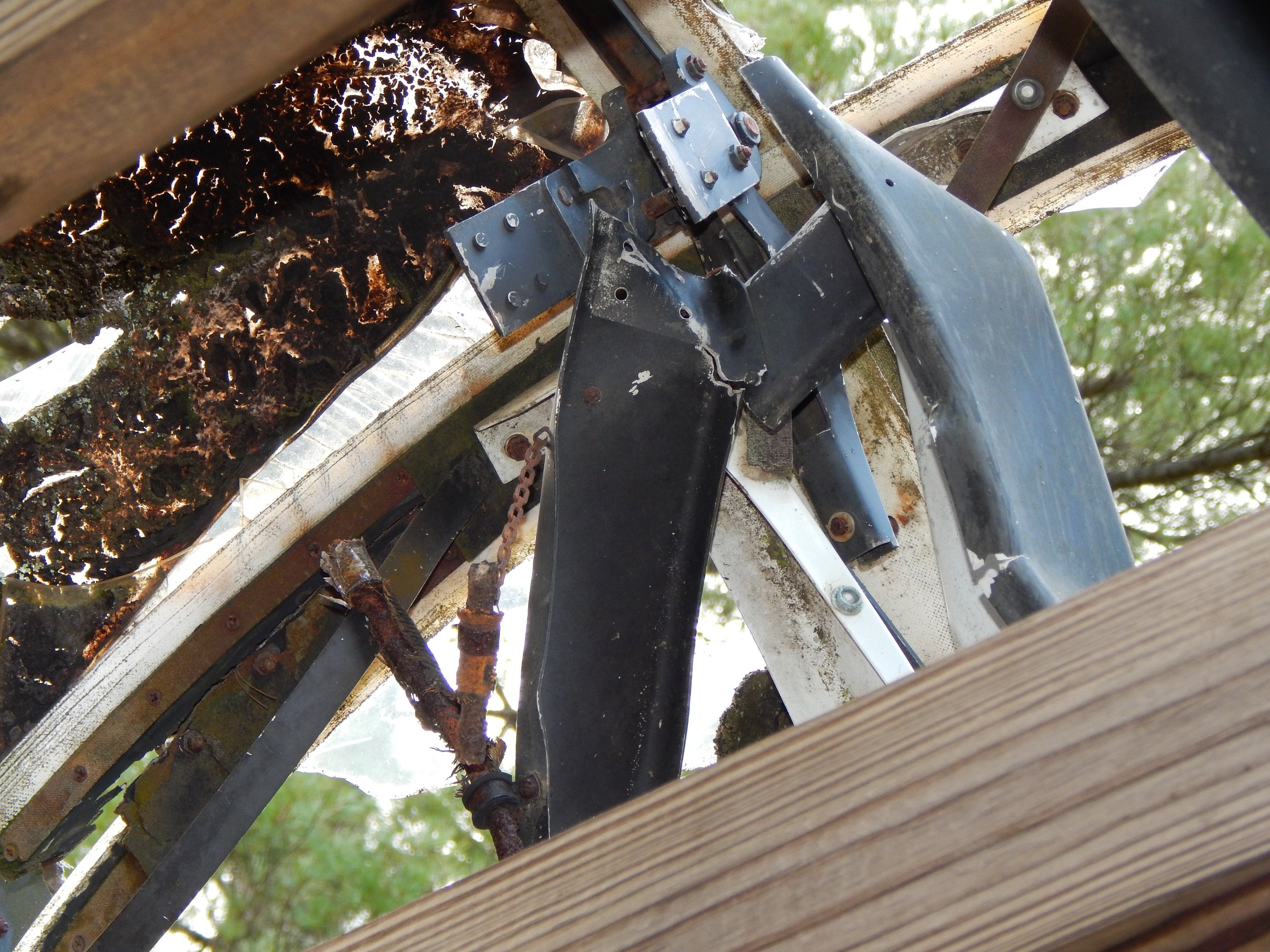Field Trip: Hurley B47 Crash Site
In the spring of 1961, in the span of two months, two B47 Stratojet bombers crashed in the woods of northern Wisconsin
B47E bombers at a US airbase
In the evening hours of February 24, 1961 the silence of the northern Wisconsin night was rent apart as an Air Force strategic bomber screamed over the treetops at low altitude. The aircraft, a Boeing B47E Stratojet from Forbes Air Force Base in Kansas, was on a training mission, simulating a low level bombing run. Such a mission was quite routine, with the Air Force maintaining a station in nearby Ironwood, Michigan to monitor such operations. But the night was not to be routine.
At 2322 the aircraft disappeared from radar, and at around the same time a local man, Milton Erickson, reported seeing a flash in the sky. A distorted radio message was also reported by the Ironwood monitoring station, possibly an order for the crew of four to bail out.
Search and rescue units were dispatched by local emergency services and were joined by aircraft from the Duluth Air Force Base in the morning, and the wreckage of the bomber was found by aircraft at 1000, with the debris scattered over a large area. One of the General Electric turbojet engines was found 600 yards from the crash site, indicating that it had separated from the plane before the crash. Efforts to locate the wreckage were hampered by the deep snow drifts and the remoteness of the swampy area in which the aircraft went down.
All four men aboard the bomber were killed in the crash, and their remains were identified and recovered from the wreck.
Captain James P. Jarret, Aircraft Commander
Lieutenant Charles F. Weise, Pilot
Lieutenant Gary H. Hanify, Navigator
Lieutenant Theodore H. Stalmach, Navigator
The swampy terrain in which the bombers crashed, as well as the wooded hills between them, photographed in October, 2021
This tragedy would not be the only one to occur that spring, as a mere nine weeks later another B47 would crash a mere five miles from the site of the first. Again flying from Forbes Air Force Base at Topeka, at 0245 on May 2, 1961 the aircraft disappeared from Air Force radar. The aircraft lost control as it approached the target at Norrie Hill, and the crew was ordered to bail out, with the aircraft commander and navigator successfully doing so before the aircraft crashed.
The bomber crashed into a hogback, a wooded hill bisecting two sections of swamp, and digging a 15 foot deep crater across Hanson Road as it came in. The debris field from the crash was strewn over an area reported by local newspapers to be the size of a city block.
An instructor pilot and the copilot were both killed in the crash.
Captain Dale B. Rasmussen, instructor pilot
Lieutenant Demosthenis D. Hariton, copilot
The aircraft commander, Captain Frank S. Meade, suffered only minor injuries from ejecting, and was able to walk to a nearby road, where he was picked up by a Wisconsin DNR Warden. The navigator, Captain Johnny T. Hill, suffered a dislocated shoulder and knee when he landed in the trees. He was spotted by a search plane and found by a county forest service employee. Both men were treated on the scene and sent to hospital in Ironwood.
Assorted debris from the crash at the memorial
The sites of both crashes are fairly close together, in the woods of northern Wisconsin near the Michigan border. A memorial is maintained by a local group in memory of the six men lost, incorporating several components of the aircraft found at the sites. It is located rather off the beaten path, but is a beautiful tribute to a tragedy that struck in early 1961.
Below are several more images taken at the memorial site in October, 2021.
The memorial located near the crash site
The canopy of one of the bombers is suspended over the main memorial
A detail shot of some of the damaged equipment inside the canopy
Another detail shot of some of the damaged equipment inside the canopy
Another image of smaller pieces of debris
The main memorial, built around an ejection seat from one of the aircraft
Across from the main memorial is a set of flagpoles as well as signs detailing a typical radar bombing mission
A model of a B47, bearing the tail numbers of both crashed aircraft
A picnic area overlooking the swamp at the memorial entrance
One of several plaques at the site, this one listing the names of the aircrews. Others include the aforementioned mission description as well as relevant articles from the local newspaper












